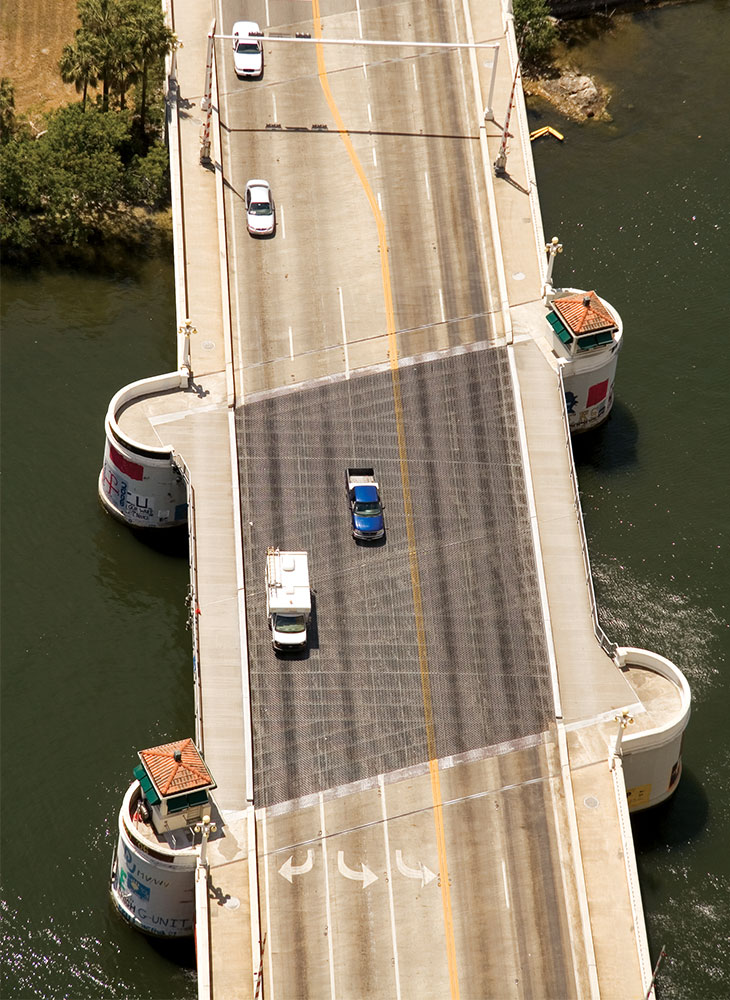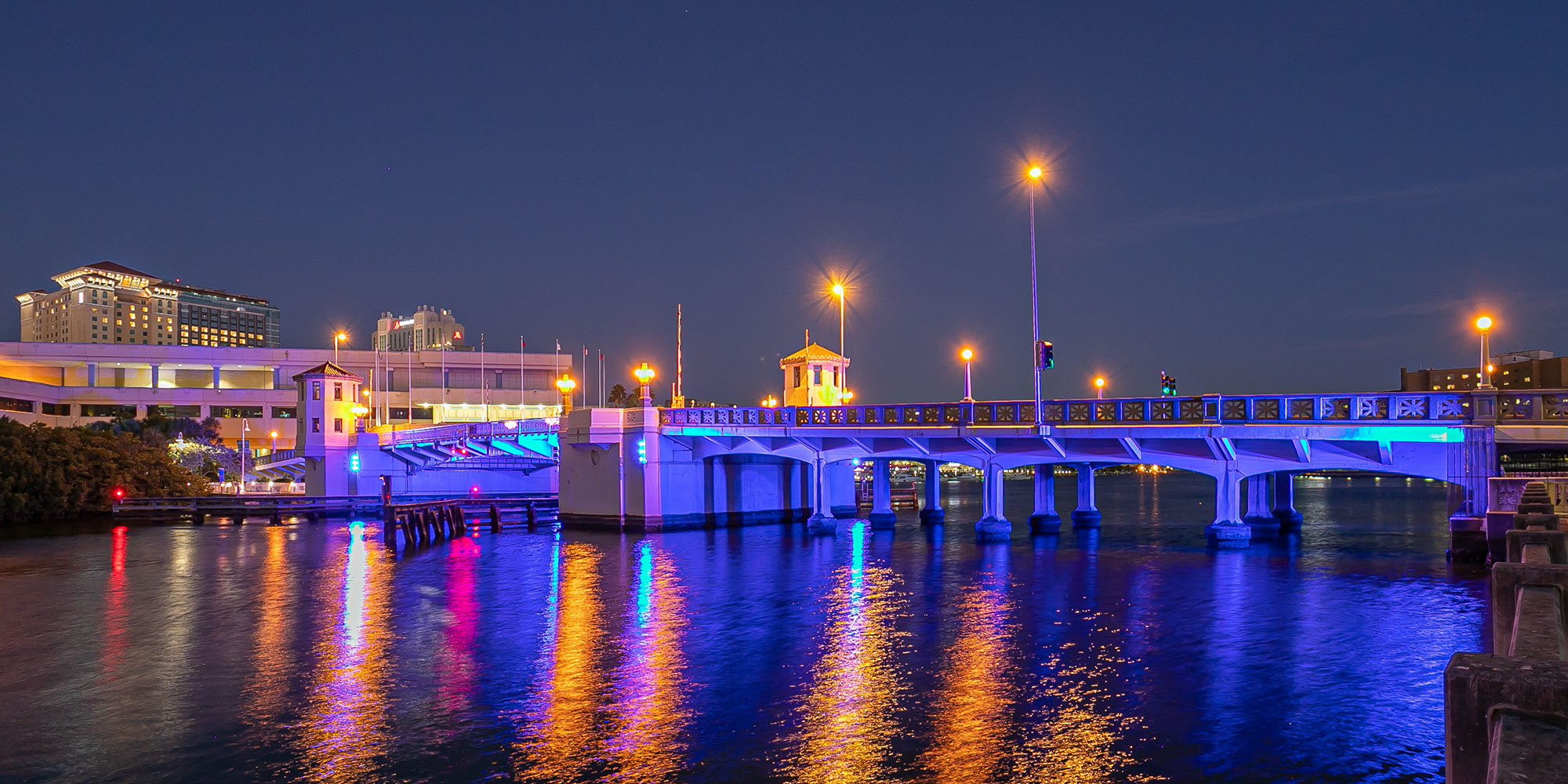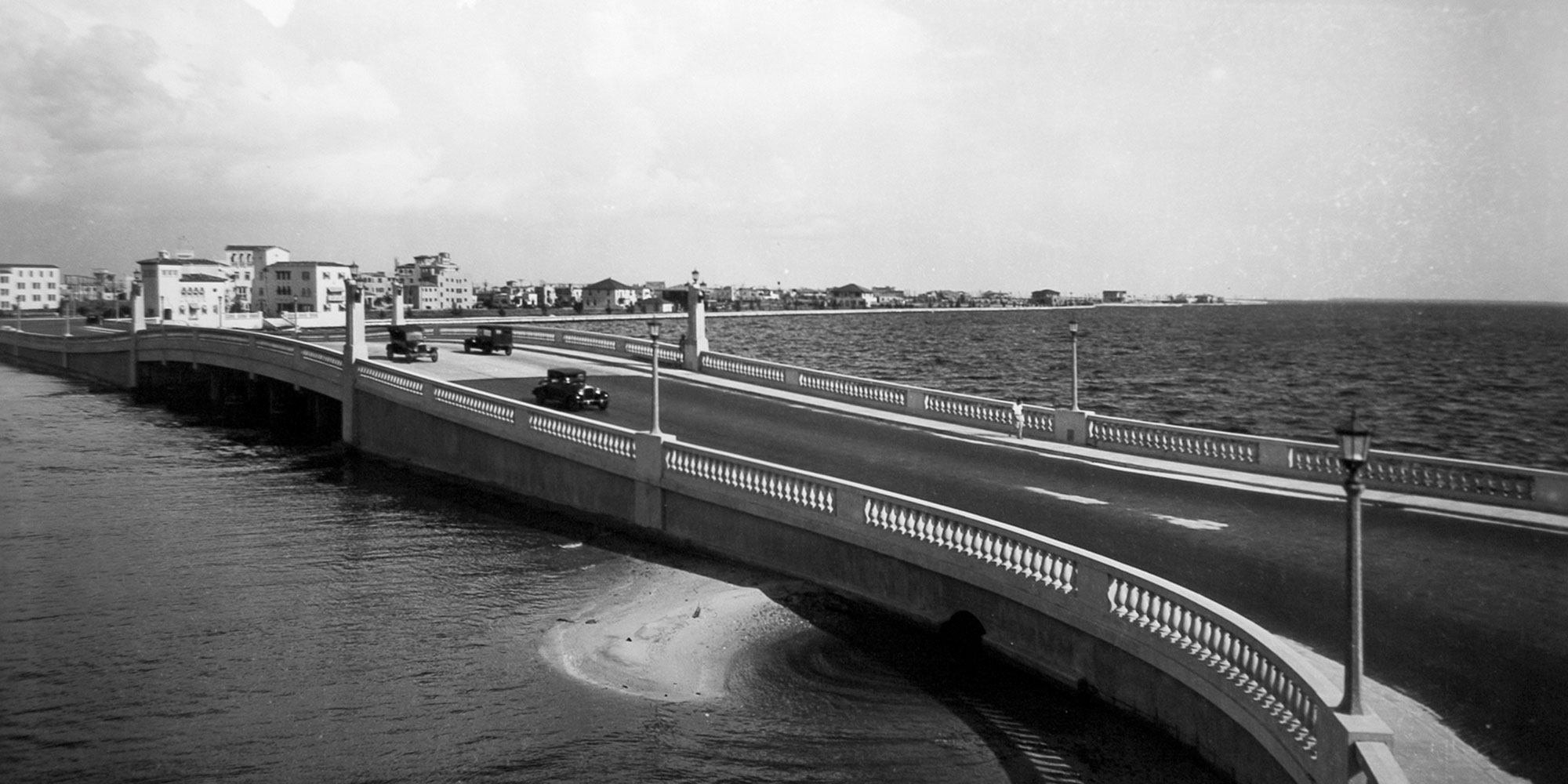Island Bound: The Davis Islands Bridge
In the early 1920s, Davis Islands didn’t exist. Well, at least not the Davis Islands we’ve come to know today. Back then, the mosquito-infested landmasses were known as Little Grassy Key and Big Grassy Island (or Depot Key), and they contained marsh grass, small sandy hills and mangroves, not million-dollar homes.
There was no need for a bridge. David P. Davis changed that.
A developer who had previously prospered in Miami, Davis spearheaded a dredging and filling operation that made the islands inhabitable during the Florida real estate boom of the roaring ‘20s. But to gain approval from the city to move ahead with his plans for a luxury community — many in the area were against the development — Davis first agreed to build a bridge and donate a plot of land for a park.
According to the city’s archived photo records from 1926, the first Davis Islands bridge was made of wood. However, photographs taken only two years later show a magnificent concrete structure that had a look reminiscent of Bayshore Boulevard’s famed seawall. Today, the bridge has two spans, one for incoming traffic and one for those leaving the island.

River Crossing: The John F. Kennedy Bridge
In order to build the stylish Tampa Bay Hotel (now the University of Tampa) in the late 1800s, railroad baron Henry B. Plant had two demands for area leaders: Extend Lafayette Street (now Kennedy Boulevard) a half-mile west of the Hillsborough River, and construct a bridge over the river.
Until then, the area west of Downtown Tampa was mostly wilderness, and the best way to cross it was by ferry. The city met both of Plant’s conditions, and the Lafayette Street Bridge, which was made of wood, was completed in 1888. Another version of the bridge, reportedly the third at the site, was constructed in 1913 at a cost of $250,000 and included a drawbridge, miniature Ybor City-style lights and a bridge-tender’s house. Until the 1940s, streetcars crossed the bridge to connect Downtown Tampa to Hyde Park and other residential areas.
Two decades later, Lafayette Street and its bridge were renamed after President John F. Kennedy. The 1913 span remained in operation until 1994, when the Department of Transportation repaired the bridge while restoring its historic features in a $7.8-million project that lasted a year. Today, the bridge has new-world functionality yet maintains an old-world charm.

Draw Attention: The Platt Street Bridge
After purchasing 20 acres along the Hillsborough River in 1886, Chicago native O.H. Platt, a winter vacationer here, began building elegant homes on the land. He called the area Hyde Park.
Later, a road bearing his name (Platt Street) was built, and in 1926 the Platt Street Bridge, featuring its trademark drawbridge, followed.
Today, the original bridge is still in use, and more than 18,000 cars cross over it every day. In 2011, the bridge underwent a $13.8 million renovation to repair age-related corrosion issues and make mechanical updates.
The bridge was built at the same time and designed identically to the nearby Cass Street Bridge, which made both projects more cost efficient. At 518 feet long, the Platt Street Bridge cost $400,000 to erect (the equivalent of about $5.7 million today). Intended to relieve congestion on the Lafayette Street Bridge, now Kennedy Boulevard, it became vital to the growth and development of South Tampa and carries the same value years later.
In 2006, Tampa City Council unanimously supported a proposal to grant the bridge with historic designation. To earn this distinction, it had to meet certain National Park Service historic criteria — namely, that it be more than 50 years old, have architectural significance and be connected to a historical significant person.



